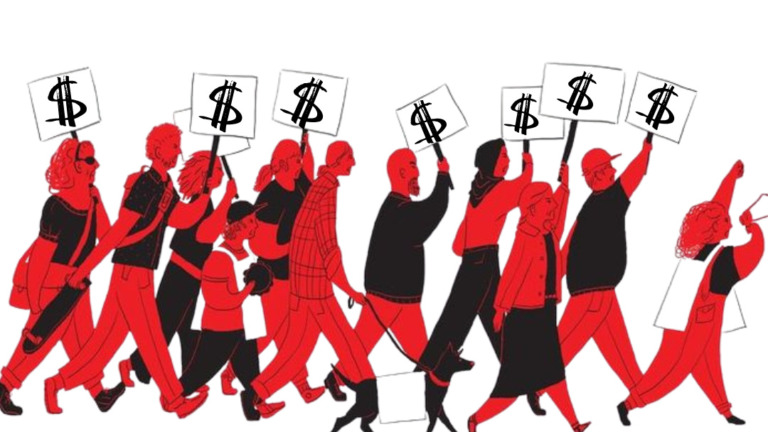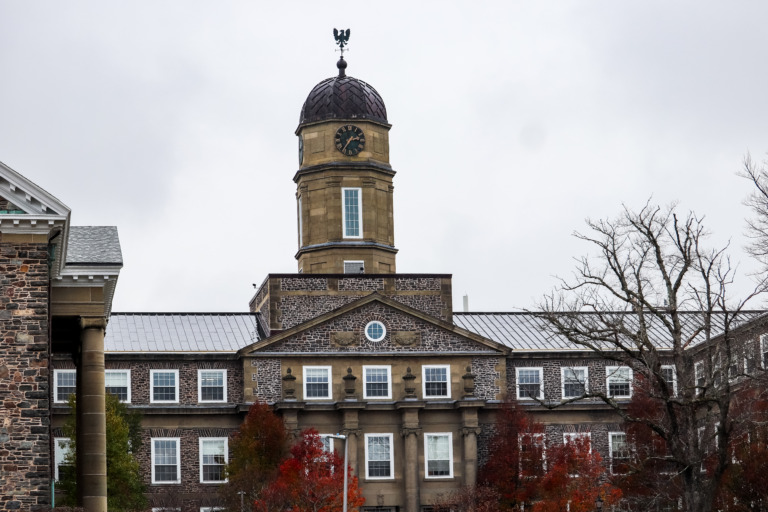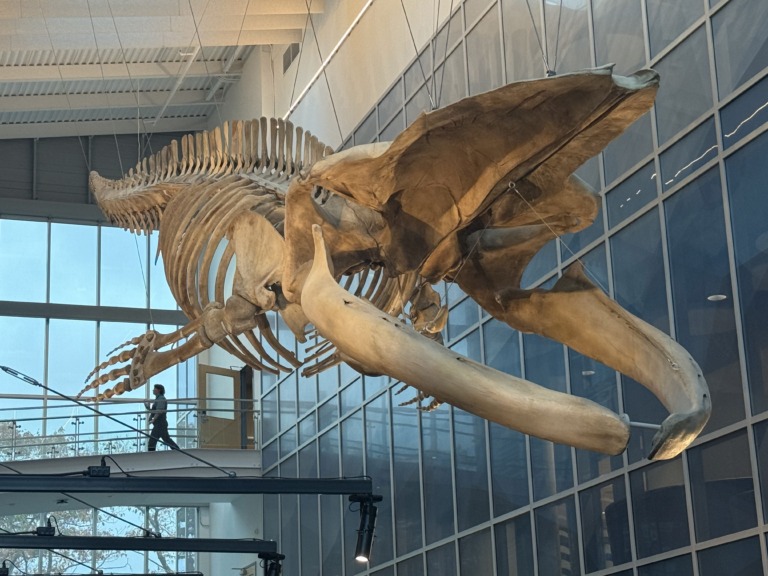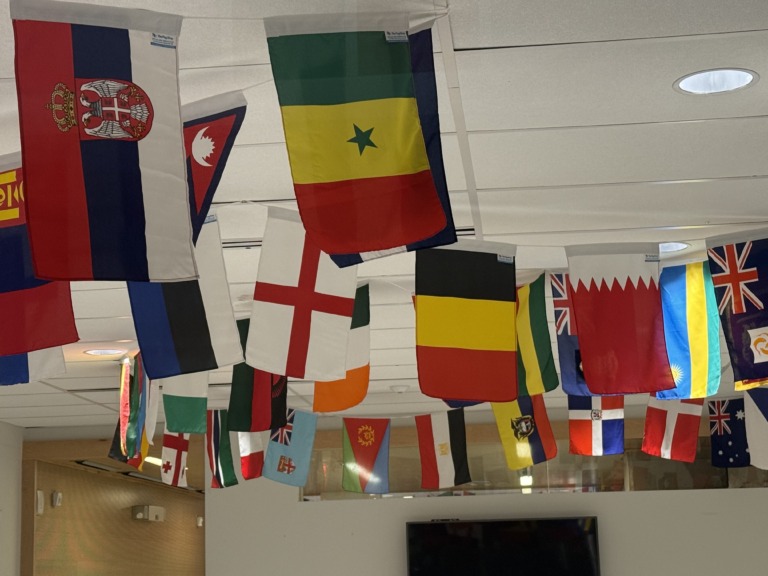
By Hilary Beaumont, Copy Editor
Radio reporter Asaf Rashid believes a community member without a voice in the local media is like a journalist stripped of free speech. So last June when his co-worker proposed a new publication to expose racism in Halifax, Rashid didn’t hesitate to help. Called Racism in Perspective, the new magazine funded by the Nova Scotia Public Interest Research Group (NSPIRG) is scheduled to debut as early as this spring.
“It’s really important,” said Rashid, campaign co-ordinator for NSPIRG. “Specifically because of how bad the media coverage has been in general about issues around racism. It’s the same type of stereotypes over and over again.”
Rashid tacked and stapled posters around Halifax. He sent e-mails calling for poetry, essays, songs, comics, photos and artwork – anything rooted in the idea of ‘race’. “We invite you to call it as you see it, and to say it loud and clear,” the posters proclaimed.
Rashid felt drawn to the project. Last May he covered community reaction to schoolyard brawls at Cole Harbour and Auburn Drive high schools for CKDU. While interviewing the students and parents involved, he noticed a rift between his sources’ stories. The police and school board told one tale while Black parents and children told another. Yet Rashid said the local media did little to represent Black students’ stories of police brutality.
“The problem is a lack of places out there where the voices of the people who are facing these daily assaults and harassments within these marginalized communities (can be heard, and a) lack of space for those stories to come out,” he said. “So we want to create that space.”
In local newspapers, White faces fill that space. Halifax’s print media do not reflect the racial reality of the city, of the province, in an accurate way. We do not tell stories about racism and institutional injustices as part of an overarching news philosophy; instead we talk about race in a tokenized manner. We carelessly misrepresent racialized people as celebrities or criminals. We fail to provide vital historical context for traditionally under-represented communities.
However, opposing views on racial coverage exist in local newsrooms. Some people see White paper. Some people don’t.
Newspapers neglect to represent racialized people
On the side streets off of Spring Garden Road, I asked 10 people – all who have lived in Halifax for more than one year and who regularly read the news – the same question: Are racialized people under-represented, equally represented or over-represented in Halifax’s print media? Seven people said they are under-represented. Two said they are equally represented. One said they are over-represented.
After this informal survey, I decided to look at the Chronicle Herald – the most widely read newspaper in Nova Scotia, and the largest independent daily in Atlantic Canada.
It is not possible to determine race based on named sources. Instead I analyzed the Herald’s photos because they superficially reflect the people in the stories they accompany.
I counted the photos in the paper’s “A” section (local, national and international news) for one month. Then I categorized the people in the photos by race.
From Aug. 22 to Sept. 22, 2009, the Chronicle Herald printed 304 photos that showed people. Of these photos, 283 showed White people, 11 showed Black people, four showed Aboriginal people and six showed people from other racial backgrounds.
Ninety three per cent of identifiable photos were of White people. Seven per cent showed people from racialized groups.
In an e-mail Dan Leger, director of news content at the Herald, said these numbers are not a fair representation of the paper.
“I do not believe that analyzing the content of one section of a newspaper over a very limited time will provide enough data to properly understand what that paper is doing, for good or ill,” he wrote. “As an editor, I would never accept that methodology for a news story. Any conclusions drawn from such a limited sample, which doesn’t include coverage of the arts, sports or business, to give a few examples, would be very suspect.”
In addition, I surveyed photos from the Herald’s front pages for three months in 2009. The numbers were similar: one person in every 10 was from a racialized group. I also noted the context of these photos. The racialized people who made the cover fell mostly into two categories: prominent public figure or criminal.
In May, Tiger Woods graced the front page twice and pictures of Black youth involved in the same arrests on which Rashid reported made the front page four times. Three crime stories with photos also showed racialized people that month. In October, O.J. Simpson, two Black men charged with murder and a Black former child soldier were pictured in front-page photos. In June, Jesse Jackson, Michael Jackson and politician Percy Paris made the cover.
Aboriginal people were by far the most under-represented; over the span of three months only one Aboriginal person appeared on the cover. He danced in a stand-alone photo wearing traditional clothing. The Herald did not provide historical context.
Aboriginal author Daniel Paul said he isn’t represented in Halifax’s print media.
Paul, author of We Weren’t the Savages, gave a talk at Dalhousie’s Student Union Building on Jan. 28. He told students and faculty the true history of Nova Scotia, which he outlines in his book, and pointed to recent examples of racism in the local media.
“For the Halifax Herald to have published that little ‘today in history’ thing where a White man discovered the mouth of the Amazon – that’s utter nonsense. The place was discovered for thousands of years before any European ever saw the mouth of the Amazon. But it’s a demonstration of White supremacist thinking when these people who edit such things can’t see in their minds the people who were there. (We are) victimized by a racism that’s so pervasive that it’s invisible.”
Paul, who wrote for the Herald in 1994, said newspapers should start a campaign to eliminate systemic racism from Nova Scotia.
“It needs to be done,” he said in a brief interview after his presentation. “Newspapers are the ones that are the dispensers of information. … When you’re looking at television news you get a few paragraphs about something and that’s about it. But newspapers can publish stories from the past and revelations, and ask questions. A newspaper’s responsibility is to begin to work with society toward improving itself.”
Jon Tattrie, a freelance writer and author, pitches stories to local print media outlets. He said local newspapers are interested in diverse coverage.
“There’s a real hunger for them,” he said over the phone last week. “In the current issue of Halifax Magazine I’ve got a story about Seven Sparks healing lodge, part of the Mi’kmaq Friendship Centre. It’s a program for Aboriginal offenders to rehabilitate themselves through Mi’kmaq culture. And the editor (Trevor Adams) was so excited about it. He was really thrilled from the start that I had pitched it to him, and would run stories like that every edition if he had them.”
Since he started freelancing on Feb. 11, 2008 – the day Transcontinental shut down the Daily News and dropped Tattrie as a copy editor – he has learned to tailor his pitches to each editor’s taste. He said local print editors would run stories about racialized people, as long as they had a news hook.
However, he said the local media do not accurately represent Halifax’s population.
“It can get slanted. It can get skewed. And I’m sure I have too. But if people don’t tell you, and you don’t see it in the first place then you’ll just never be aware of your own misunderstandings.”
In an interview last fall Tim Bousquet, news editor of The Coast, said those misunderstandings are common in the local print media. On his blog, Bousquet plays a watchdog role for the media’s portrayal of racialized people. He has criticized the Herald and the CBC’s online publication for unfair representation of Black people in a criminal context.
“There are some real particulars and the first that comes to mind is crime reporting. The way it works, and I see it all the time in the Chronicle Herald – I always call them on it, too – it’s: ‘A woman was mugged. Two Black men were seen running away.’ It’s not a description anyone can make anything out of. It just tells you generally to be afraid of Black people.”
In an e-mail, Bousquet attached a Herald article that described three suspects in a crime as “Black and wore black hoodies and dark pants.”
Above the link, he simply wrote: “Who does this help?”
Bousquet said publications under-represent or misrepresent racialized groups because of the types of stories reporters and editors choose.
“We tend to only be interested in those communities when there’s a problem, which is the nature of the media.”
However, he said there’s no easy way to ensure fair representation of racialized groups.
“To some degree, the media reflects the good and the bad attitudes. So the charge is: can’t we reflect more than those attitudes? We should have a mission to better represent minorities. By better represent, I mean to give a fuller picture. Not just the Black or White, hero or scum.”






